Skywing Edge 540 91': electric is better!
#1

Thread Starter
Hello Guys,
I am aware that this model has already been written about in this forum but what I like is sharing my experiences with enthusiasts modellist. I started my new setup about a electric conversion of a beautiful aerobatic model with a wingspan of almost 2.4m which is usually powered by a classic 50/70cc petrol engine. The peculiarity of this test of mine is not so much the fact of replacing the motor with a more ecological "brushless" but for the reason that for me it is the first time... I am not fast when it comes to "conversions" because, as you will have way of reading in the past years in my various tests, I have already experimented with electric fans both in small models and in turbine jets.

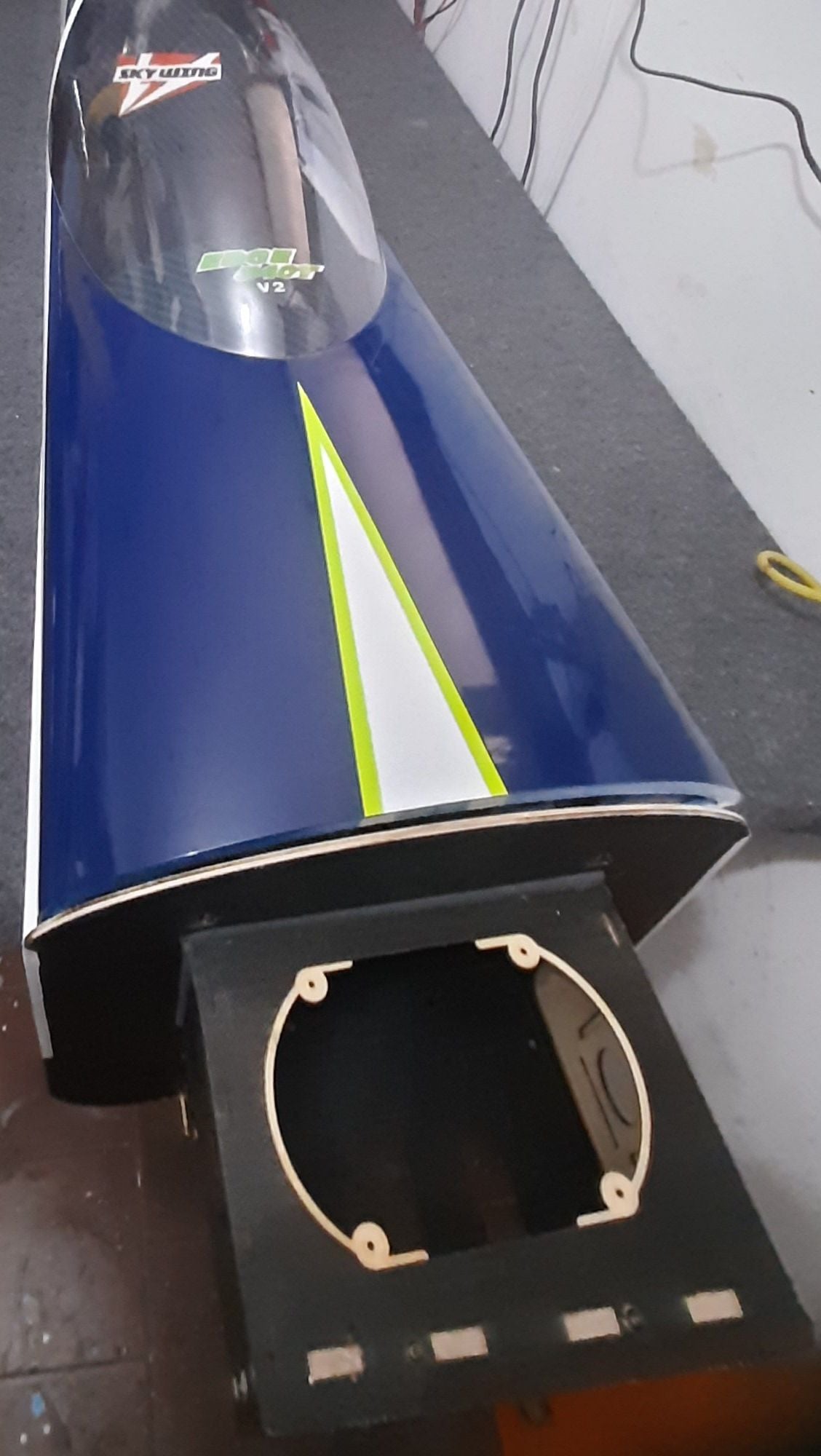
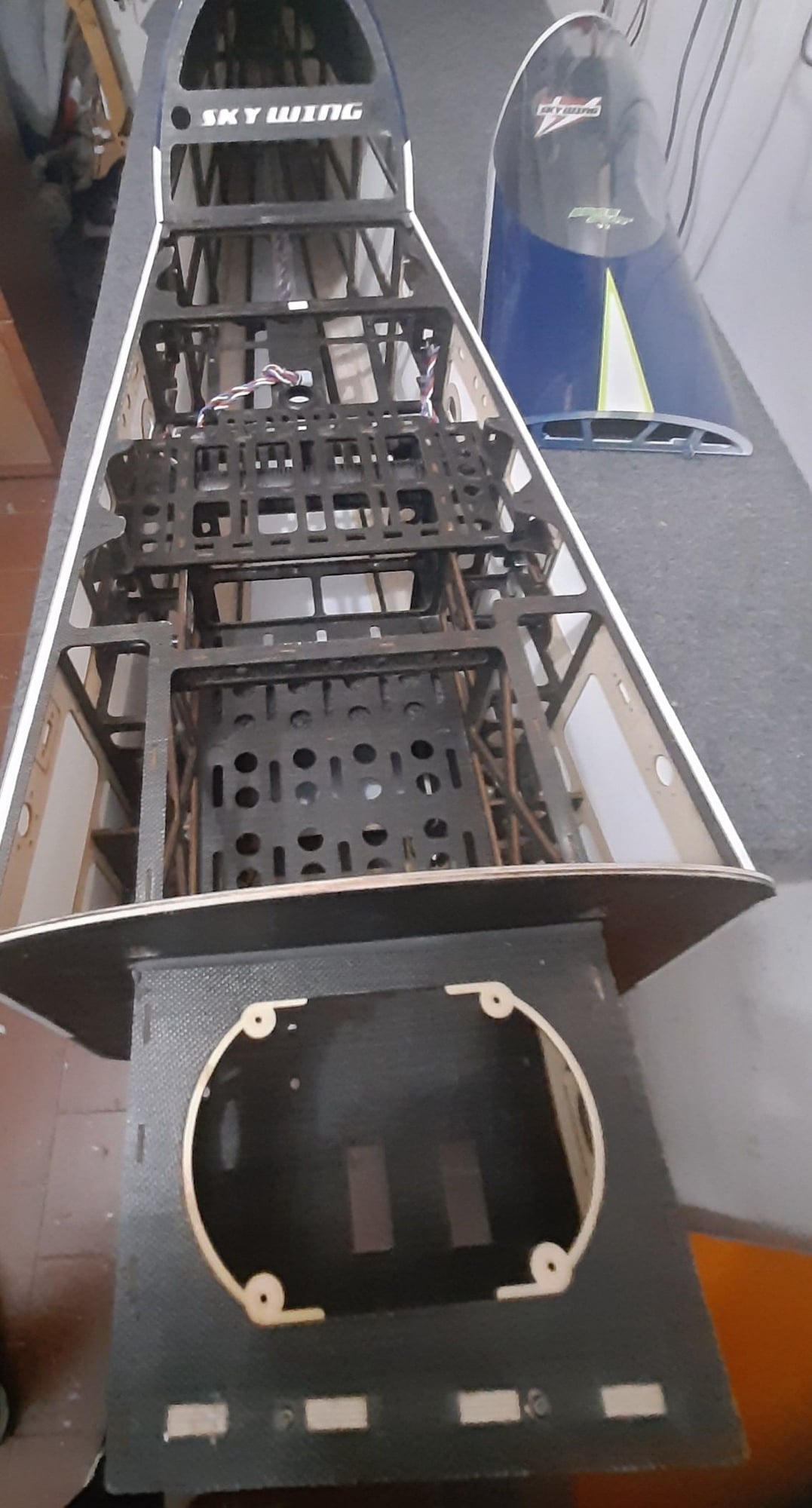

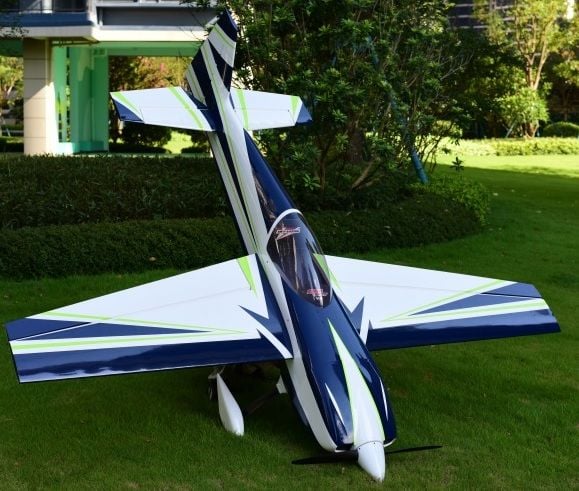
As always, my intent is to give useful information to those who want to undertake this path for the first time, avoiding them from making mistakes (at least I try...). So we will reason with simple words and concepts. But let's go in order.The model that I use to "electrification" is a Skywing Edge 540 with a 91' wingspan that I had already purchased from the legendary Mattfly after a crash of my legendary Extra 330SC with a DA70Twin that accompanied me in the fields for many years (and of which I have done an accurate review). Without dwelling too much on the model I can only say that, despite costing a little more than the average, it appears to be particularly refined both in the covering and in the structure which has all the laser-cut wooden parts covered with a thin carbon sheet which makes the structure very rigid. Very interesting are the quick release and fastening devices for the wings, quote and canopy with a magnetic system (fantastic!). The weight declared by the manufacturer is around 9.2kg. We will see at the end of the work if it is truthful. I will divide my review into distinct sections that will take into consideration the different aspects of the setup.
I am aware that this model has already been written about in this forum but what I like is sharing my experiences with enthusiasts modellist. I started my new setup about a electric conversion of a beautiful aerobatic model with a wingspan of almost 2.4m which is usually powered by a classic 50/70cc petrol engine. The peculiarity of this test of mine is not so much the fact of replacing the motor with a more ecological "brushless" but for the reason that for me it is the first time... I am not fast when it comes to "conversions" because, as you will have way of reading in the past years in my various tests, I have already experimented with electric fans both in small models and in turbine jets.





As always, my intent is to give useful information to those who want to undertake this path for the first time, avoiding them from making mistakes (at least I try...). So we will reason with simple words and concepts. But let's go in order.The model that I use to "electrification" is a Skywing Edge 540 with a 91' wingspan that I had already purchased from the legendary Mattfly after a crash of my legendary Extra 330SC with a DA70Twin that accompanied me in the fields for many years (and of which I have done an accurate review). Without dwelling too much on the model I can only say that, despite costing a little more than the average, it appears to be particularly refined both in the covering and in the structure which has all the laser-cut wooden parts covered with a thin carbon sheet which makes the structure very rigid. Very interesting are the quick release and fastening devices for the wings, quote and canopy with a magnetic system (fantastic!). The weight declared by the manufacturer is around 9.2kg. We will see at the end of the work if it is truthful. I will divide my review into distinct sections that will take into consideration the different aspects of the setup.
#2

Thread Starter
The choice of engineSince we don't need to use fossil fuel for the combustion engine, we can store the tank, refueling socket, fuel pipes, etc. in the drawer. My first idea was to install a classic Rotomax 50CC on the model (the one launched by Hobbyking and which can be found almost everywhere online but due to the fact that it was not available and that in Europe it was sold at prices according me out of the market, I surfed the web a bit and on the various specialized forums finding the solution that I considered a good compromise: a Dualsky GA6000 160Kv 28 poles (180Kv also exists) which can be powered up to 12S. The weight is 1 .2kg approximately and develops a peak power of 8.4HP at 130A. Compared to the 180Kv one, it has a lower power of approximately 9% but a maximum absorption of 7%. Various recommended propellers ranging from 22x10, 23x8, 23x10 at 24x8, 24x9, 24x10, 25x10. I had a 24x10 carbon Mejzlink at home and therefore I used this one which in the Dualsky tests on the bench at 12S develops 17kg of pull at peak power with 125A of absorption in the performance curve this engine with half the throttle delivers around 6kg of pull with just over 25° of absorption (!).
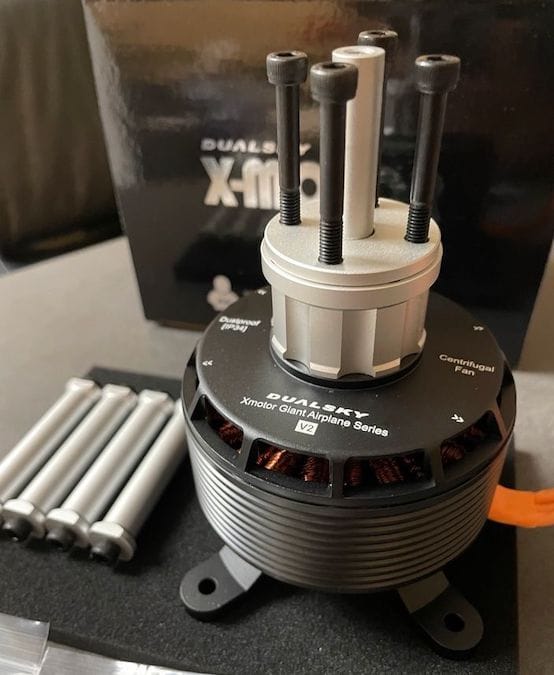
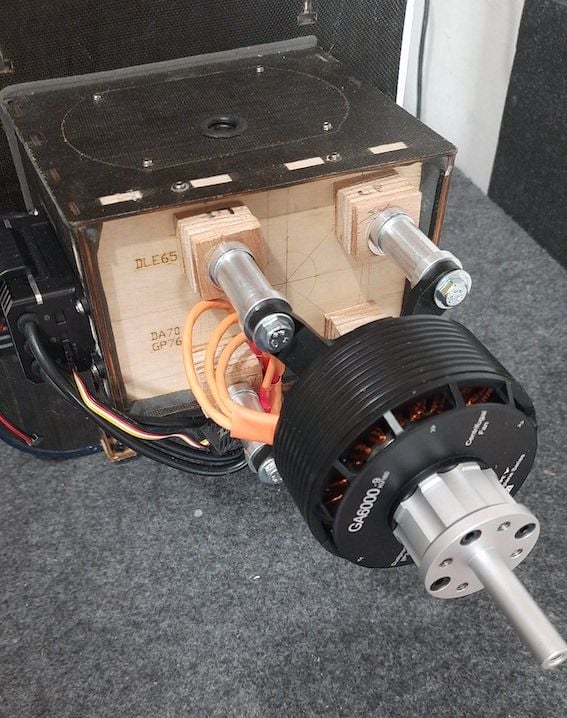




#3

Thread Starter
For a big motor a powerful ESC!
Here I am continuing, little by little, with my review. Today we talk about voltage regulators for electric motors. To manage this powerful Dualsky GA6000 engine, which is actually very beautiful aesthetically and massive on the construction side (see crankshaft, support flange for the spinner plate and propeller and body) I had to choose a regulator that was up to the level of performance.
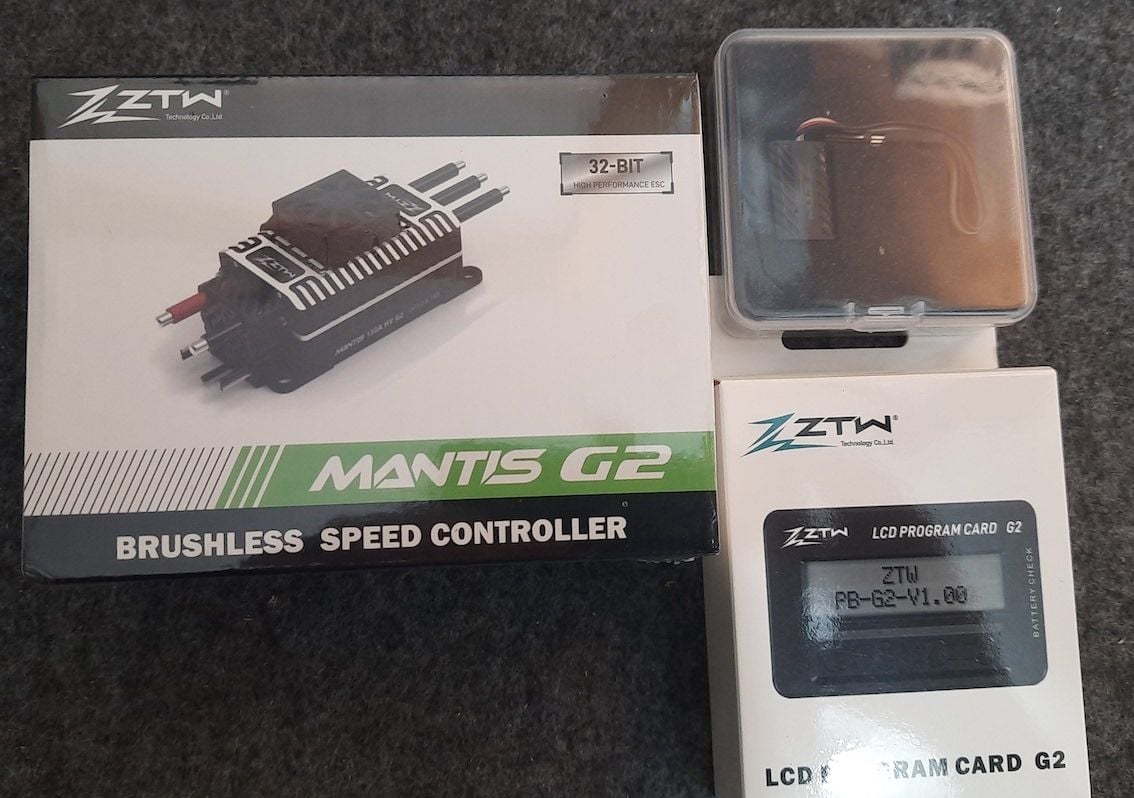


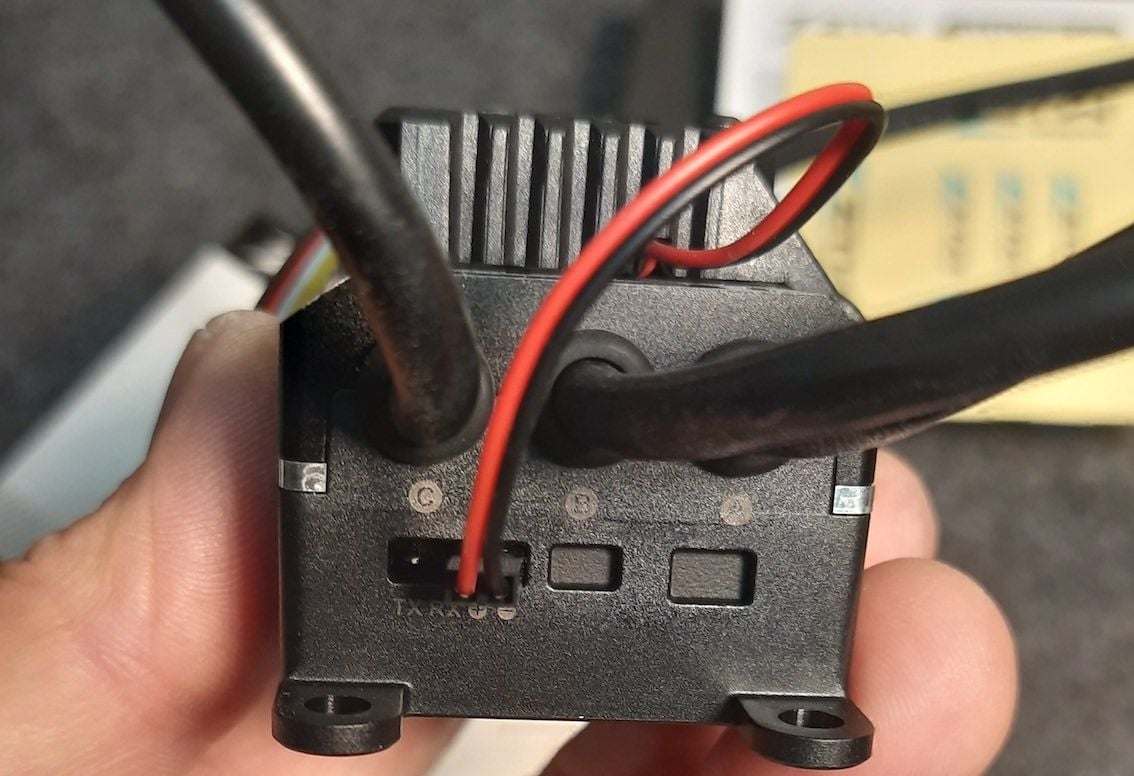
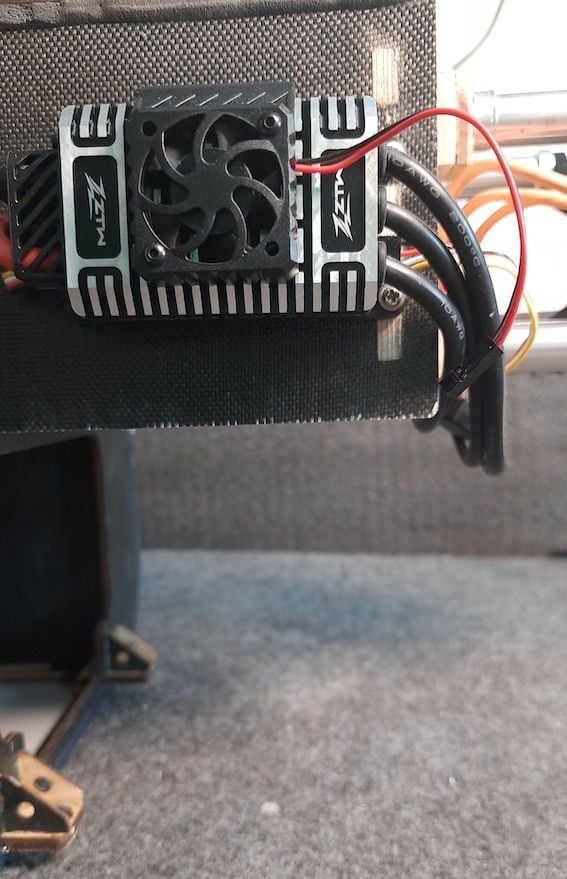

The brushless controller is in fact the most important device in an electric motor: not only does it allow simple min/max adjustment of the power (and rpm) of the electric motor, but it must resist both operating temperatures (often high) and absorption loads (Ah, ampere) which in our case can even reach peaks of 125Ah. There are a vast variety of them on the market with features for all needs but, often, they are from unknown companies (at least to me...) that are not popular among model makers or that have prices that are too low to have an adequate quality standard. In my laboratory I have an HV regulator for 12S which had a maximum absorption of 120Ah and which I therefore did not use to avoid running into overload problems. I therefore had to purchase a new ESC and after personal evaluations which concerned both the brand, the quality and the cost, I decided to purchase a 160A (Opto) ZTW Mantis HV G2 which can support up to 14S and a peak amperage of 180A (therefore well above my needs). The oversizing allows me to feel more at ease regarding the amperages and a possible temperature peak. In my tests I had already used a ZTW brushless voltage regulator but only for EDF motors and I had already had good feedback in terms of quality and performance. The ZTW Mantis HV G2 160Amp. It weighs 230 grams (in line with regulators in the same range) for a size of 78x54x32mm (but this configuration is available in the same model starting from 25A).
Salient features of this ESC are a new 32-bit processor, a particularly efficient heat dissipation system (thanks to a fan that is factory installed in the upper part of the ESC and which takes power from a 4-pin port also used for programming) and the possibility of managing the rotation inversion from the remote control. This function is obtained by connecting to the Rx an additional yellow cable present where the plug that goes to the Rx is in the motor channel and, using another channel on the TX it is possible to reverse the rotation of the motor (this is useful for the fans!). Of note is the real-time management of regulator data such as current, voltage, temperature, RPM, accelerator and ESC status thanks to the optional Bluethoot interface combined with its specific smartphone application and therefore limited to the vicinity of the model; this accessory (cost approximately 24 euros) is useful for modifying the operating parameters even on the flying field. Alternatively, for programming you can use the small ZTW viewer (not included) or even via Tx like all Esc. The 160A ZTW Mantis HV G2 is also equipped with a
safety protection that allows power to be cut off to the motor if the transmitter signal is lost for more than 2 seconds.
This ESC does not have the output to power the receiver as it is (Opto) but this is a condition common to high power regulators which therefore require a separate power system for the receiver. In my case I used two 2S batteries combined with a Pioneer Powerbox servo control unit (cheap, small in size and very convenient both to set up and use).In practice, during the first tests, the regulator proved to be very precise in the linearity of its response to acceleration and despite having subjected it to prolonged tests with a 24x10 carbon propeller, overheating was never excessive (the regulator goes into overdrive above 110 degrees). protection and limits the number of revolutions to allow cooling).
Here I am continuing, little by little, with my review. Today we talk about voltage regulators for electric motors. To manage this powerful Dualsky GA6000 engine, which is actually very beautiful aesthetically and massive on the construction side (see crankshaft, support flange for the spinner plate and propeller and body) I had to choose a regulator that was up to the level of performance.






The brushless controller is in fact the most important device in an electric motor: not only does it allow simple min/max adjustment of the power (and rpm) of the electric motor, but it must resist both operating temperatures (often high) and absorption loads (Ah, ampere) which in our case can even reach peaks of 125Ah. There are a vast variety of them on the market with features for all needs but, often, they are from unknown companies (at least to me...) that are not popular among model makers or that have prices that are too low to have an adequate quality standard. In my laboratory I have an HV regulator for 12S which had a maximum absorption of 120Ah and which I therefore did not use to avoid running into overload problems. I therefore had to purchase a new ESC and after personal evaluations which concerned both the brand, the quality and the cost, I decided to purchase a 160A (Opto) ZTW Mantis HV G2 which can support up to 14S and a peak amperage of 180A (therefore well above my needs). The oversizing allows me to feel more at ease regarding the amperages and a possible temperature peak. In my tests I had already used a ZTW brushless voltage regulator but only for EDF motors and I had already had good feedback in terms of quality and performance. The ZTW Mantis HV G2 160Amp. It weighs 230 grams (in line with regulators in the same range) for a size of 78x54x32mm (but this configuration is available in the same model starting from 25A).
Salient features of this ESC are a new 32-bit processor, a particularly efficient heat dissipation system (thanks to a fan that is factory installed in the upper part of the ESC and which takes power from a 4-pin port also used for programming) and the possibility of managing the rotation inversion from the remote control. This function is obtained by connecting to the Rx an additional yellow cable present where the plug that goes to the Rx is in the motor channel and, using another channel on the TX it is possible to reverse the rotation of the motor (this is useful for the fans!). Of note is the real-time management of regulator data such as current, voltage, temperature, RPM, accelerator and ESC status thanks to the optional Bluethoot interface combined with its specific smartphone application and therefore limited to the vicinity of the model; this accessory (cost approximately 24 euros) is useful for modifying the operating parameters even on the flying field. Alternatively, for programming you can use the small ZTW viewer (not included) or even via Tx like all Esc. The 160A ZTW Mantis HV G2 is also equipped with a
safety protection that allows power to be cut off to the motor if the transmitter signal is lost for more than 2 seconds.
This ESC does not have the output to power the receiver as it is (Opto) but this is a condition common to high power regulators which therefore require a separate power system for the receiver. In my case I used two 2S batteries combined with a Pioneer Powerbox servo control unit (cheap, small in size and very convenient both to set up and use).In practice, during the first tests, the regulator proved to be very precise in the linearity of its response to acceleration and despite having subjected it to prolonged tests with a 24x10 carbon propeller, overheating was never excessive (the regulator goes into overdrive above 110 degrees). protection and limits the number of revolutions to allow cooling).
#4

Thread Starter
Here we go again. Let's continue with what concerns the regulator.
Before being used, the ZTW Mantis HV G2 (the factory settings are set for standard use of brushless motors for propeller aircraft) must be "taught" for the throttle stroke from 0 to 100 (min./max.) for optimize the acceleration curve. To do this, simply turn on the radio first and place the accelerator stick in the max position. (100%). Then connect the battery to the ESC and wait about 2 seconds after which the motor will emit two acoustic signals: at this point you will have to return the accelerator stick to the minimum position (0%); the success of the gas stroke detection operation will be confirmed by a new acoustic signal. This calibration procedure is similar to practically all ESCs but is essential for correct modulation of engine power. Finally, I would like to say a few more words about the convenience of the Android app which, with the Bluetooth module, is easy and intuitive and always at hand. The Bluetooth module can be left connected to the regulator even in flight but I am of the opinion that the less electronics you bring on the flight the better, so I remove it.
Finally, an important thing regarding the operation of a 28-pole (or more) engine like the Dualsky GA6000: someone asked me if my engine had jerks or hiccups when going from 0 to 100% throttle: as I have already replied privately, at the moment I have not noticed similar problems but to be sure I inquired directly from Dualsky who kindly replied that these "disturbances" are not engine malfunctions but can occur if you do not use the latest generation regulators that have 32-bit processors. And in fact my ZTW Mantis satisfies precisely these needs and goes very well...
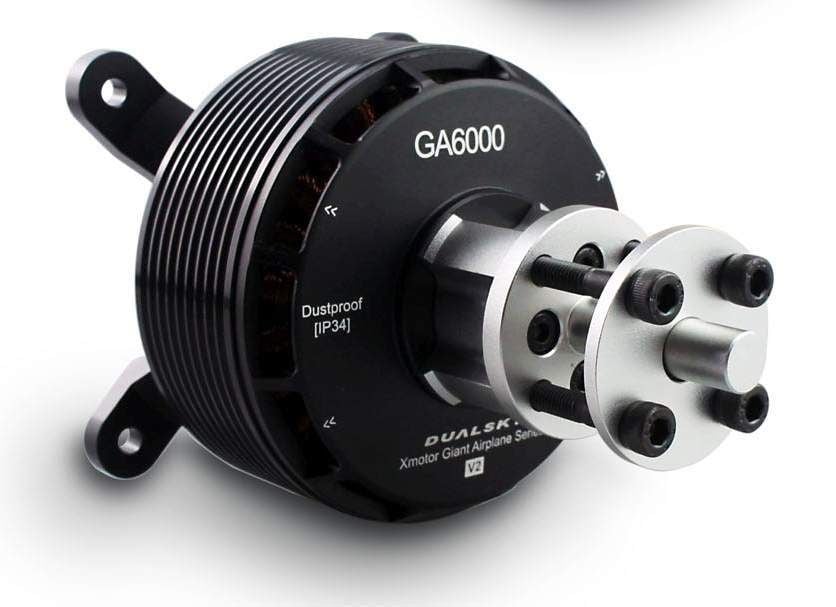
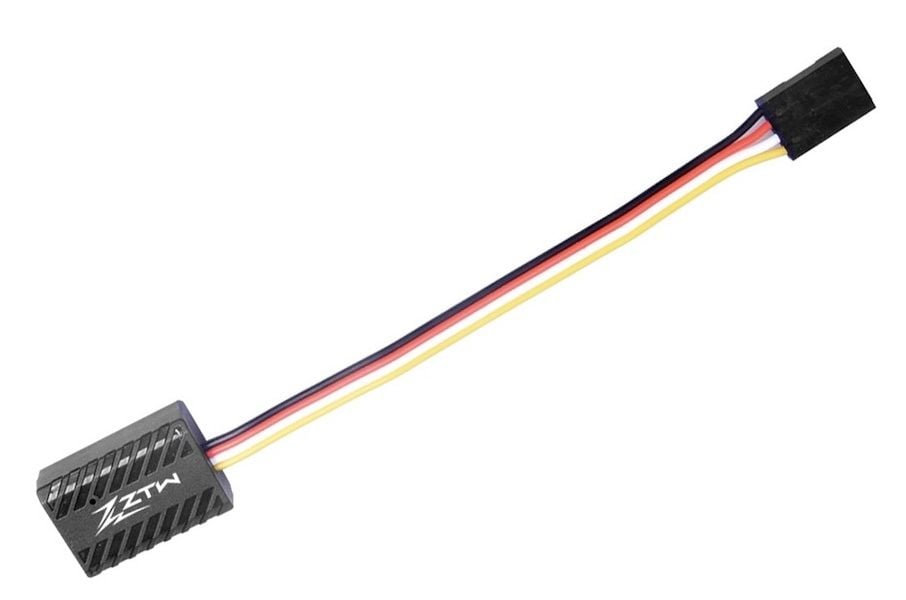
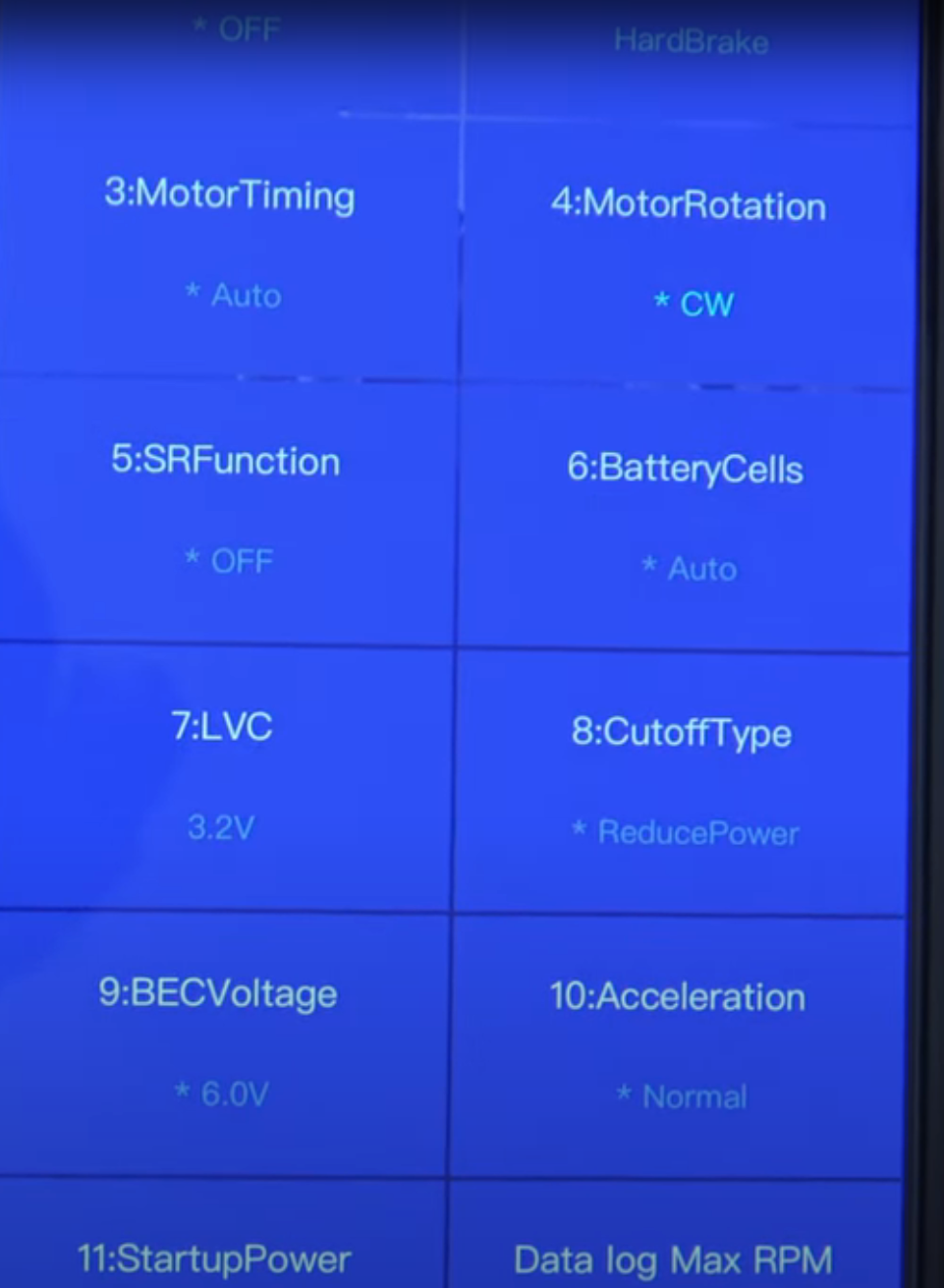



Before being used, the ZTW Mantis HV G2 (the factory settings are set for standard use of brushless motors for propeller aircraft) must be "taught" for the throttle stroke from 0 to 100 (min./max.) for optimize the acceleration curve. To do this, simply turn on the radio first and place the accelerator stick in the max position. (100%). Then connect the battery to the ESC and wait about 2 seconds after which the motor will emit two acoustic signals: at this point you will have to return the accelerator stick to the minimum position (0%); the success of the gas stroke detection operation will be confirmed by a new acoustic signal. This calibration procedure is similar to practically all ESCs but is essential for correct modulation of engine power. Finally, I would like to say a few more words about the convenience of the Android app which, with the Bluetooth module, is easy and intuitive and always at hand. The Bluetooth module can be left connected to the regulator even in flight but I am of the opinion that the less electronics you bring on the flight the better, so I remove it.
Finally, an important thing regarding the operation of a 28-pole (or more) engine like the Dualsky GA6000: someone asked me if my engine had jerks or hiccups when going from 0 to 100% throttle: as I have already replied privately, at the moment I have not noticed similar problems but to be sure I inquired directly from Dualsky who kindly replied that these "disturbances" are not engine malfunctions but can occur if you do not use the latest generation regulators that have 32-bit processors. And in fact my ZTW Mantis satisfies precisely these needs and goes very well...






#5

Thread Starter
New entry also for servos: Forza Yantrs!
We finish electronics setup of this model with the choice of servos to install which, given the size and weight of the model, as well as the large moving parts to manage, could only be up to the task. And the opportunity to carry out this test was perfect to "experiment" with a new line of servos with very interesting characteristics but which I didn't know existed until I came across some websites where they spoke very well about it . They are produced by a Chinese company (and this is obvious...) "Yantrs" which specializes in the research, design, development and creation of high-end products for RC remote control which has set itself the goal of putting them on the market at a cost that is currently as low as possible. I took a look at the Yantrs servo catalog and realized that, unlike many other companies, the Yantrs servo catalog is essential and designed to meet the needs of an increasingly demanding modeling market in terms of quality and price.
What struck me most when I started reading the characteristics of these servos is the particularity of the gears they mount which are not of a traditional shape but machined obliquely (called helical) which, say the Yantrs engineers, have the characteristic of engaging more gradually with smoother operation which helps reduce shock loads (so they should last longer...), more stable torque transmission with less noise and vibration. These types of gears, unknown in servos until recently, are now increasingly found in other brands in the RC world.
From the Yantrs catalog I chose the B0850MGX-E servo with brushless motor, programmable rotation angle, pitch resolution with 14bit processor and high precision thanks to a high resolution magnetic sensor (therefore no potentiometer present in the servo). Programming compatible with SR/SSR/SUR/SFR super fast mode.
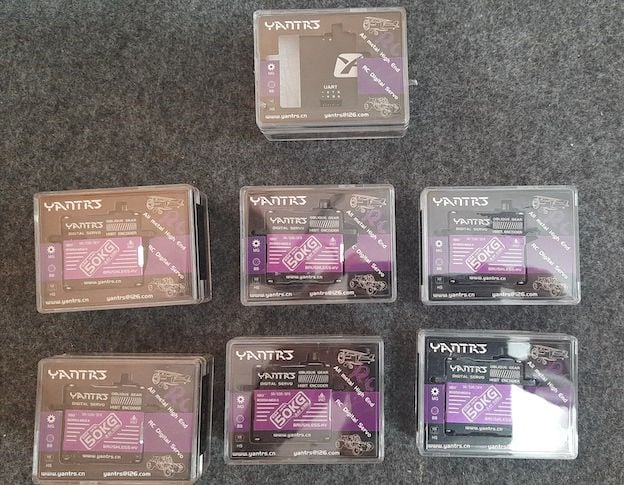
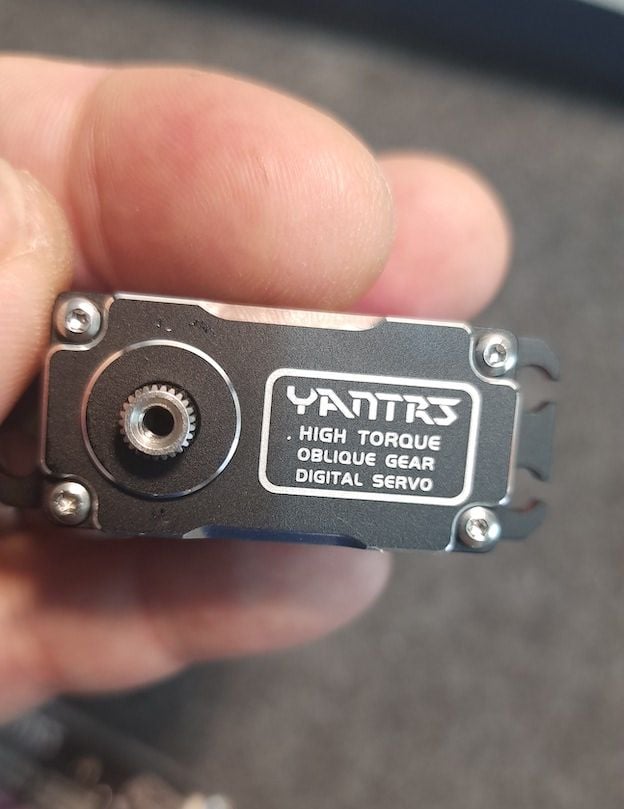
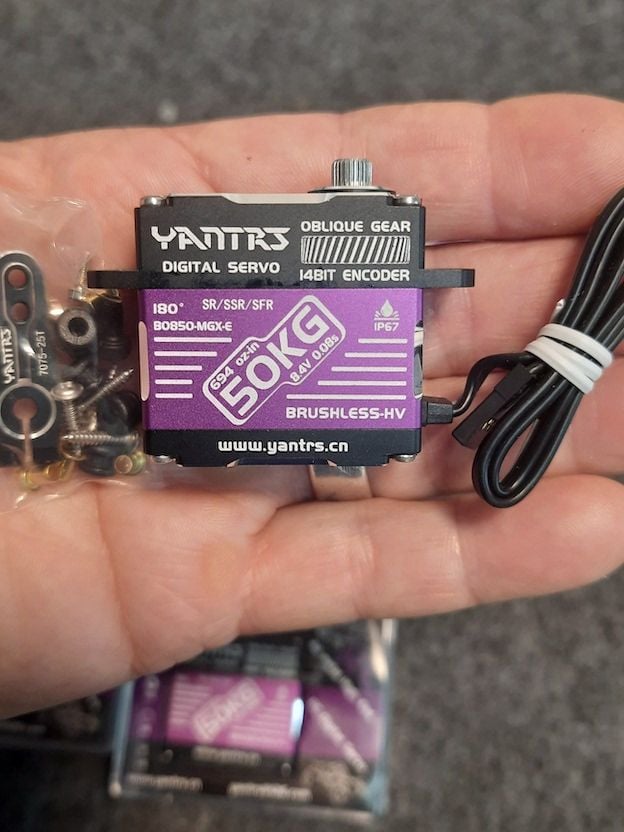
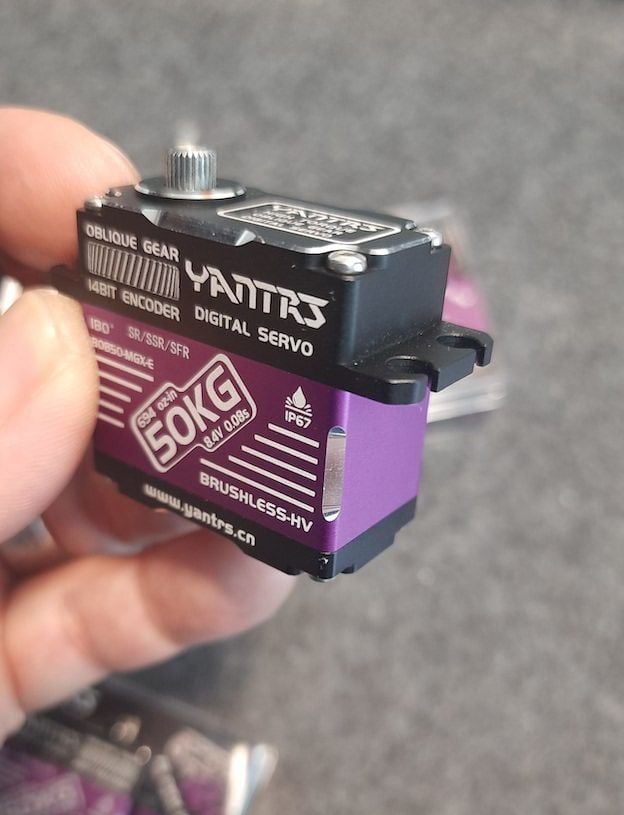
We finish electronics setup of this model with the choice of servos to install which, given the size and weight of the model, as well as the large moving parts to manage, could only be up to the task. And the opportunity to carry out this test was perfect to "experiment" with a new line of servos with very interesting characteristics but which I didn't know existed until I came across some websites where they spoke very well about it . They are produced by a Chinese company (and this is obvious...) "Yantrs" which specializes in the research, design, development and creation of high-end products for RC remote control which has set itself the goal of putting them on the market at a cost that is currently as low as possible. I took a look at the Yantrs servo catalog and realized that, unlike many other companies, the Yantrs servo catalog is essential and designed to meet the needs of an increasingly demanding modeling market in terms of quality and price.
What struck me most when I started reading the characteristics of these servos is the particularity of the gears they mount which are not of a traditional shape but machined obliquely (called helical) which, say the Yantrs engineers, have the characteristic of engaging more gradually with smoother operation which helps reduce shock loads (so they should last longer...), more stable torque transmission with less noise and vibration. These types of gears, unknown in servos until recently, are now increasingly found in other brands in the RC world.
From the Yantrs catalog I chose the B0850MGX-E servo with brushless motor, programmable rotation angle, pitch resolution with 14bit processor and high precision thanks to a high resolution magnetic sensor (therefore no potentiometer present in the servo). Programming compatible with SR/SSR/SUR/SFR super fast mode.




#6

Thread Starter
Let's move on and sorry for the slowness...  The Yantrs B0850MGX-E servo has an aluminum case, weighs 80 grams and has a reduced depth (measures 40x20x38mm); the rotation shaft has 2 classic bearings and is also pleasing to the eye. It can be powered from 6 to 8.4 volts developing a torque of 50kg at 8.4v (0.08s) and 46kg at 7.4v (0.09s), 36kg at 6v (0.12s). The rotation is 180° but adjustable via programmer.
The Yantrs B0850MGX-E servo has an aluminum case, weighs 80 grams and has a reduced depth (measures 40x20x38mm); the rotation shaft has 2 classic bearings and is also pleasing to the eye. It can be powered from 6 to 8.4 volts developing a torque of 50kg at 8.4v (0.08s) and 46kg at 7.4v (0.09s), 36kg at 6v (0.12s). The rotation is 180° but adjustable via programmer.
In the application (downloadable online) to program the Yantrs servos you can find all the main values (more or less identical to other servos with similar characteristics) such as power, rotation angle, speed, servo center, dead zone, reverse, fail-safe etc. Furthermore, in the software there is also the possibility of applying different types of servo management modes depending on the Rx: in addition to the standard mode, there are SR, SSR, SFR, SXR, UR modes, each with min. parameters. pre-set PWM max and midle. I'm not very knowledgeable in this matter but I've read that they affect the amplitude of the servo's movement, power and speed.
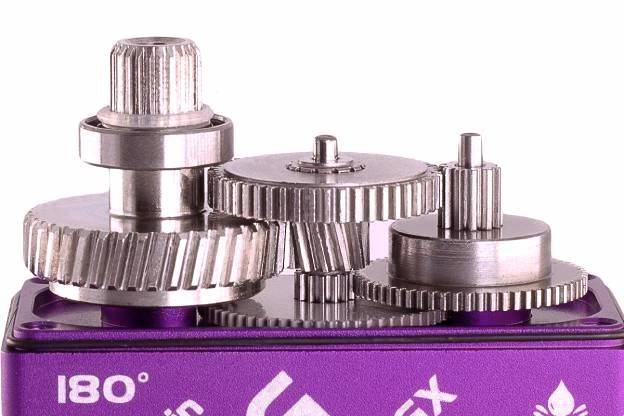
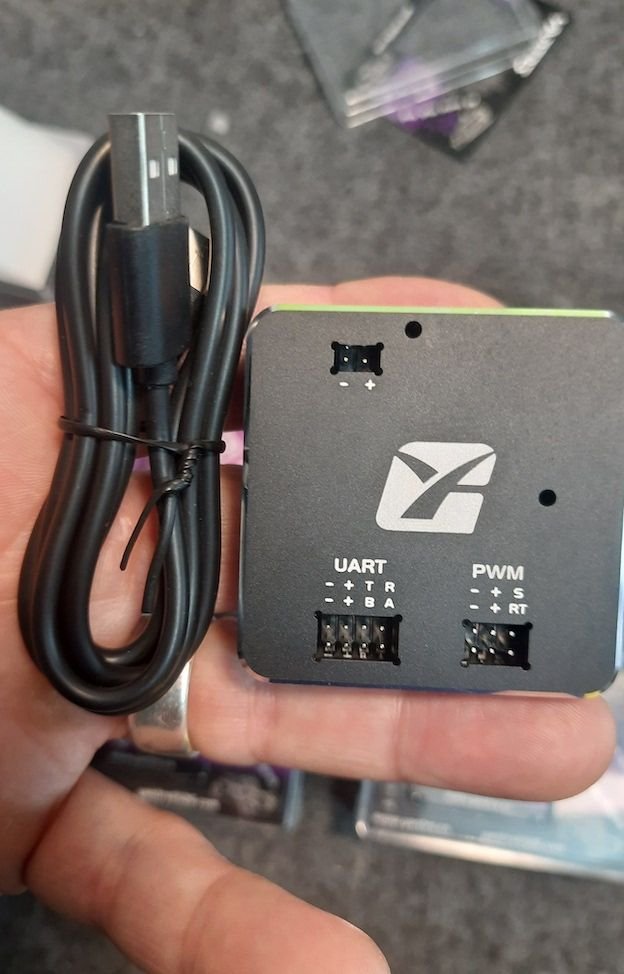
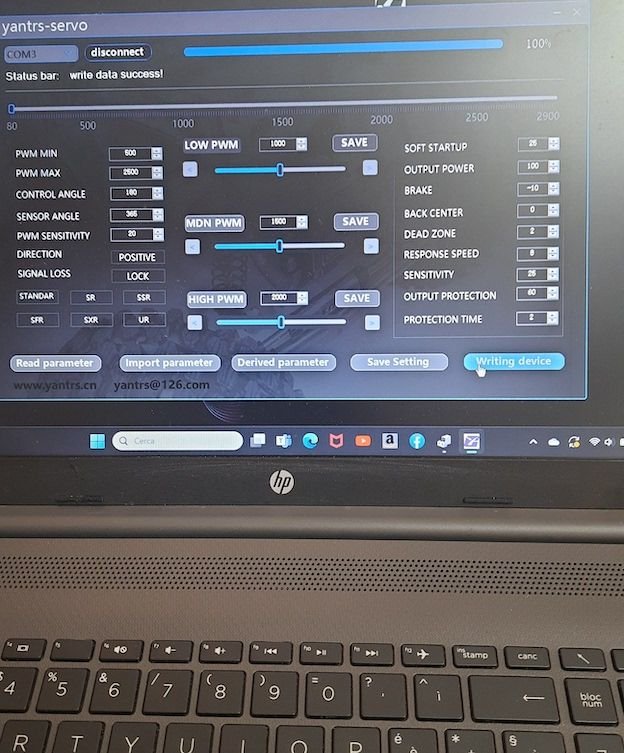

By reading a little I understood that the SSR mode is the one that more than others manages to increase the responsiveness of the servo with shorter pulses, which theoretically allows you to increase the transmission speed to more than 384 Hz, thus allowing you to transmit the gear position to the servo more frequently, e.g. reduce what is called latency here (the time needed to propagate the change in position of the steering wheel to the change in position of the car's wheels).
However, it appears that there is currently no transmitter on the market that uses a 384Hz frequency…
These servos do not emit hum and thanks to the slow power delay function at start-up they move to the neutral position slowly without jerks. Operation appears smooth and without any hesitation. The equipment is also excellent and includes a very sturdy aluminum square with two slip-proof fixing bolts on the crown. Some doubts about the servo rubbers which are the traditional round ones while I would have preferred the more robust square ones. But it's a detail...
 The Yantrs B0850MGX-E servo has an aluminum case, weighs 80 grams and has a reduced depth (measures 40x20x38mm); the rotation shaft has 2 classic bearings and is also pleasing to the eye. It can be powered from 6 to 8.4 volts developing a torque of 50kg at 8.4v (0.08s) and 46kg at 7.4v (0.09s), 36kg at 6v (0.12s). The rotation is 180° but adjustable via programmer.
The Yantrs B0850MGX-E servo has an aluminum case, weighs 80 grams and has a reduced depth (measures 40x20x38mm); the rotation shaft has 2 classic bearings and is also pleasing to the eye. It can be powered from 6 to 8.4 volts developing a torque of 50kg at 8.4v (0.08s) and 46kg at 7.4v (0.09s), 36kg at 6v (0.12s). The rotation is 180° but adjustable via programmer.In the application (downloadable online) to program the Yantrs servos you can find all the main values (more or less identical to other servos with similar characteristics) such as power, rotation angle, speed, servo center, dead zone, reverse, fail-safe etc. Furthermore, in the software there is also the possibility of applying different types of servo management modes depending on the Rx: in addition to the standard mode, there are SR, SSR, SFR, SXR, UR modes, each with min. parameters. pre-set PWM max and midle. I'm not very knowledgeable in this matter but I've read that they affect the amplitude of the servo's movement, power and speed.




By reading a little I understood that the SSR mode is the one that more than others manages to increase the responsiveness of the servo with shorter pulses, which theoretically allows you to increase the transmission speed to more than 384 Hz, thus allowing you to transmit the gear position to the servo more frequently, e.g. reduce what is called latency here (the time needed to propagate the change in position of the steering wheel to the change in position of the car's wheels).
However, it appears that there is currently no transmitter on the market that uses a 384Hz frequency…
These servos do not emit hum and thanks to the slow power delay function at start-up they move to the neutral position slowly without jerks. Operation appears smooth and without any hesitation. The equipment is also excellent and includes a very sturdy aluminum square with two slip-proof fixing bolts on the crown. Some doubts about the servo rubbers which are the traditional round ones while I would have preferred the more robust square ones. But it's a detail...
#7

Thread Starter
Good evening guys. Forgive me for the long break but I had some problems that prevented me from continuing with the test. I take this opportunity to continue while waiting for the holidays that will inevitably lead me to a further break. But you will see that we will get to the end. In the meantime, let's conclude with the topic of servo controls that we interrupted some time ago. It seems to me that I have already explained a lot to you but there are a couple of things that I still have to tell you. The first concerns programming: I have already explained to you that the graphical interface of the Yantrs software is truly complete and many parameters can be changed but this, in addition to being a good thing, can also be a problem for those who do not have the necessary skills to understand what is being changed with the software. My advice is that once a new servo is connected, it is best to save the default parameters that are provided in the software: this is because I have noticed that there is no possibility of restoring the factory values after having made the changes and saved them on the servo. Another thing: after having made the changes to the parameters you will first have to apply them (“derived parameter”) and then write on the servo (“writinbg device”) otherwise it seems not to go well… The last thing that I have already mentioned is the fact that these servos are equipped with a 25mm aluminum bracket that is very nice and in the same color as the servo, but it is a bit short especially for those who want a lot of travel in the aileron and quote...
#8

Thread Starter
Good morning,
today I have some great news that comes to me directly from ZTW, the company from which I purchased the voltage regulator for this test, the ZTW Mantis HV G2 160A Opto that I talked about a few posts earlier. Reading the data of an ideal setting that Dualsky proposes for this motor (GA6000) with a 24x10 propeller (the sdame that I will use) I realized that although the ZTW Esc has the ability to modify some parameters, the accessible ones were not all those that I had to check for the optimization of the regulator and therefore I contacted the ZTW company directly to understand how to do it. To my great surprise I found exceptional availability so much so that the ZTW engineers purchased my same motor to couple it with the regulator that I purchased to maximize performance. Result? They sent me an update of the ZTW Mantis HV G2 160A Opto regulator that contains a specific setting for my motor (and consequently for other similar multi-pole motors) that will allow for maximum performance and reliability of the Dualsky/ZTW combination. I also received the ok to make this update available to all my readers. Fantastic, take advantage of it!
These is link for download:
https://www.dropbox.com/scl/fi/huuaw...=cm350iyw&dl=0
today I have some great news that comes to me directly from ZTW, the company from which I purchased the voltage regulator for this test, the ZTW Mantis HV G2 160A Opto that I talked about a few posts earlier. Reading the data of an ideal setting that Dualsky proposes for this motor (GA6000) with a 24x10 propeller (the sdame that I will use) I realized that although the ZTW Esc has the ability to modify some parameters, the accessible ones were not all those that I had to check for the optimization of the regulator and therefore I contacted the ZTW company directly to understand how to do it. To my great surprise I found exceptional availability so much so that the ZTW engineers purchased my same motor to couple it with the regulator that I purchased to maximize performance. Result? They sent me an update of the ZTW Mantis HV G2 160A Opto regulator that contains a specific setting for my motor (and consequently for other similar multi-pole motors) that will allow for maximum performance and reliability of the Dualsky/ZTW combination. I also received the ok to make this update available to all my readers. Fantastic, take advantage of it!
These is link for download:
https://www.dropbox.com/scl/fi/huuaw...=cm350iyw&dl=0
#9

Thread Starter
August is over and we are back from vacation. I had interrupted my review talking about the firmware upgrade of the ZTW Esc to optimize it at its best with the Dualsky DA6000 engine. And from here I resume talking today about the choice of batteries that are the "fuel" of the electric engine. Today I want to focus on another fundamental aspect for the setup of a maxi model converted with an electric engine: the batteries. The choice of power supply can be subjective with regard to how many cells to use, their amperage or the brand but there is one thing that cannot be compromised, that is the quality of the battery chemistry. Unfortunately I also fell into youthful (and inexperienced) mistakes with the first electric models (both propeller and fan) but all this helped me understand that saving on this aspect is not always a good choice. Obviously the truth is always in the middle because if it is true that batteries of brands that have long been known and appreciated by even professional modelers sometimes the cost does not justify the advantages; as it is also true that low-cost batteries are often poor in terms of performance (especially if subjected to stress such as in electric fans).
And since I like to experiment (I have tried so many batteries) I took advantage of the purchase of the Dualsky GA6000 motor to also try the LiPo Dualsky G7 HED series, where HED stands for High Energy Density. The 6S 5800Mah packs measure 158x45x51mm for a weight of 774 grams.
These cells, according to the data provided by Dualsky, thanks to continuous updates (they are now in their 7th generation) manage to be not only high-performance but also lighter and more powerful (in fact they weigh about 50 grams less than other similar packs). They have a continuous discharge capacity of 45C with high dynamic performance that guarantees over 300 charge/discharge cycles without evident loss of capacity. Interesting that Dualsky worked with Xpower to be able to obtain the advantage of having an optimized discharge voltage in the low capacity phase which translates into Greater Power even with reduced capacity residues; it is in fact known that often in LiPos there are drops in Power with the decrease in battery amperages.
The Dualsky G7 HED LiPos arrive with the pre-soldered XT60 blue plug, but this could be irrelevant for those who use other types of plugs. Finally, in terms of quality, Dualsky batteries are scrupulously inspected before shipping to the Shanghai factory.
However, given the not excessive absorption of the motor which with the 24x10 propeller should require 100% Power of about 100 amps, these batteries should not be stressed. But I would not go below 5500 mha of capacity for any battery you decide to use.
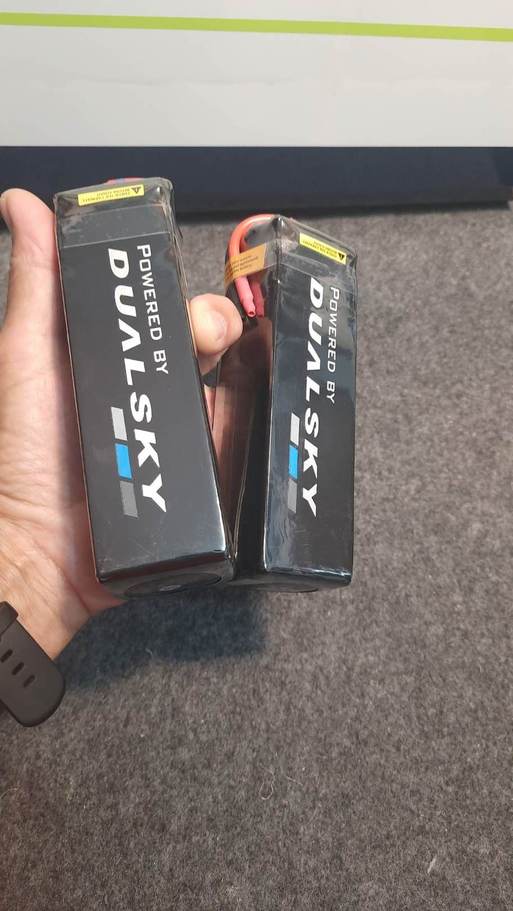
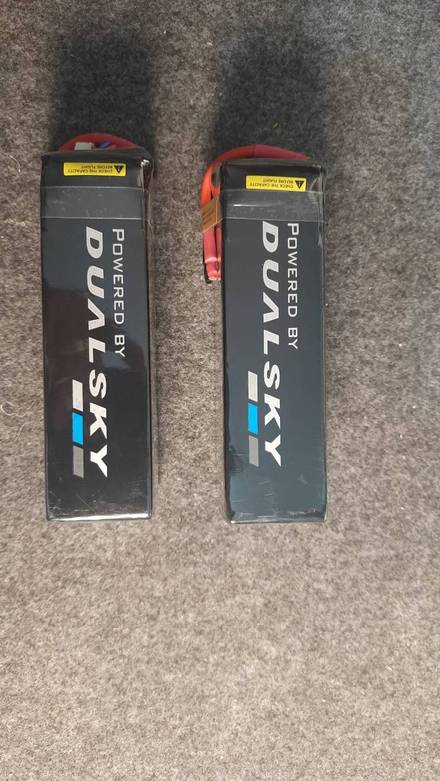
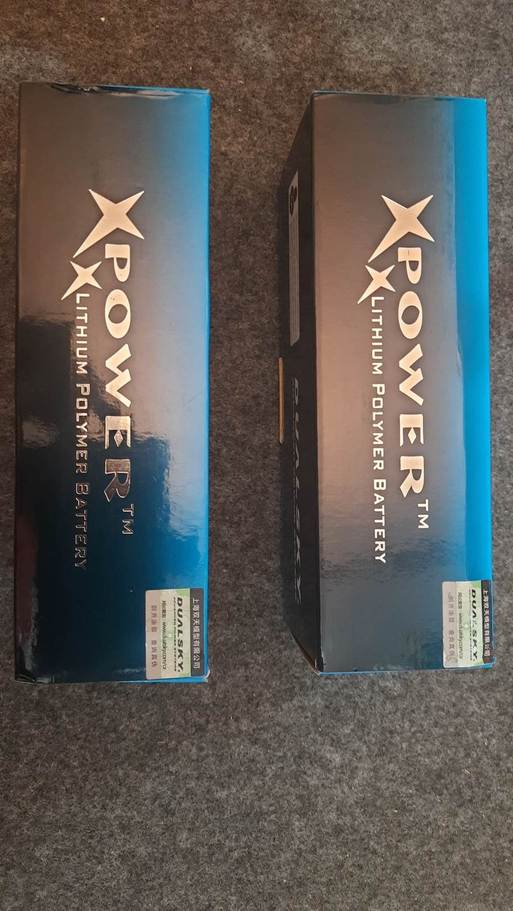

And since I like to experiment (I have tried so many batteries) I took advantage of the purchase of the Dualsky GA6000 motor to also try the LiPo Dualsky G7 HED series, where HED stands for High Energy Density. The 6S 5800Mah packs measure 158x45x51mm for a weight of 774 grams.
These cells, according to the data provided by Dualsky, thanks to continuous updates (they are now in their 7th generation) manage to be not only high-performance but also lighter and more powerful (in fact they weigh about 50 grams less than other similar packs). They have a continuous discharge capacity of 45C with high dynamic performance that guarantees over 300 charge/discharge cycles without evident loss of capacity. Interesting that Dualsky worked with Xpower to be able to obtain the advantage of having an optimized discharge voltage in the low capacity phase which translates into Greater Power even with reduced capacity residues; it is in fact known that often in LiPos there are drops in Power with the decrease in battery amperages.
The Dualsky G7 HED LiPos arrive with the pre-soldered XT60 blue plug, but this could be irrelevant for those who use other types of plugs. Finally, in terms of quality, Dualsky batteries are scrupulously inspected before shipping to the Shanghai factory.
However, given the not excessive absorption of the motor which with the 24x10 propeller should require 100% Power of about 100 amps, these batteries should not be stressed. But I would not go below 5500 mha of capacity for any battery you decide to use.









